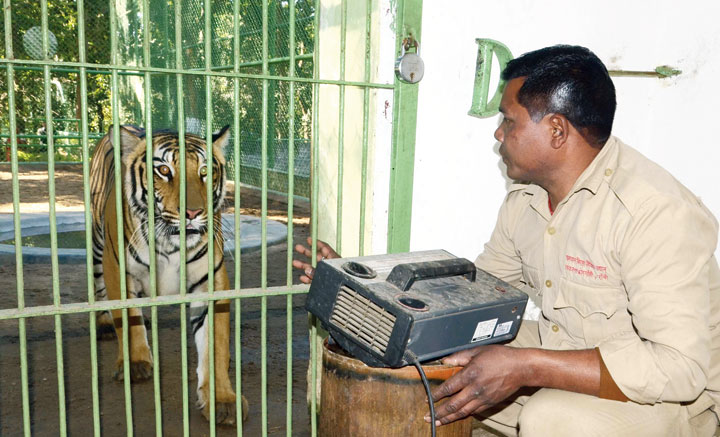The sharp dip in mercury has made the authorities of Bhagwan Birsa Biological Park in Ormanjhi sit up.
With Tuesday night temperature dropping to 8.6°C, Birsa zoo has taken a slew of steps to keep its animal inmates comfortable. Around 84 species of animals, reptiles and birds stay in the state-run zoo spread over 104 hectares of natural dry deciduous forest located some 25km from the heart of the capital.
Dr Ajay Kumar, veterinary surgeon, said main changes were geared around making animal enclosures more comfortable and dietary changes.

A mahout burns a bonfire near elephant Lakhi at Birsa zoo in Ranchi. Picture by Prashant Mitra
Changes introduced during the winter include sending tigers, lions, smaller members of the feline family and monkeys to room-like enclosures at night. These have floors with wooden planks, heaters and hot-air blowers.
Animals with open enclosures get jute curtains and hay on the floor. Aviaries with wire mesh are covered by straw to protect birds from dew.
The senior vet said animals feel more hungry in winter. “For instance, if a tiger eats 8 kilos of buffalo meat a day, it goes up to 10 kilos in winter,” he said.











